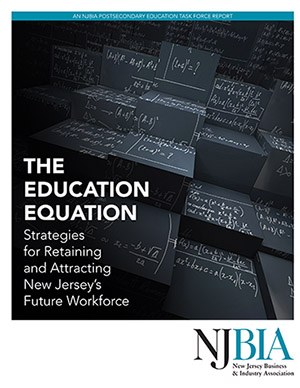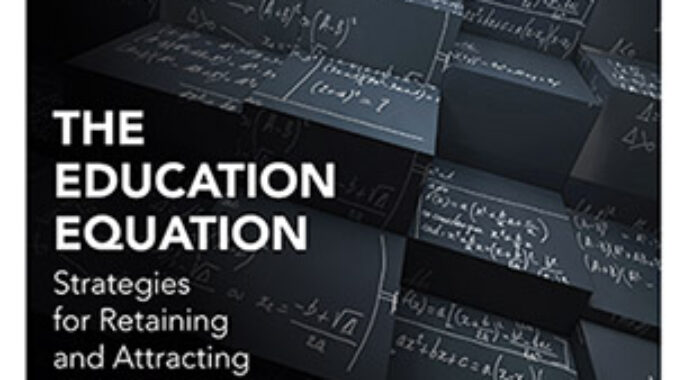 An updated version of NJBIA’s Postsecondary Education Task Force report, released today, shows that young adults continue to leave New Jersey at an alarming rate, driven by first-time college-students choosing to attend schools out of state.The report, titled The Education Equation: Strategies for Retaining and Attracting New Jersey’s Future Workforce, was originally released last year with 13 recommendations to stem outmigration by matching education to private sector jobs.
An updated version of NJBIA’s Postsecondary Education Task Force report, released today, shows that young adults continue to leave New Jersey at an alarming rate, driven by first-time college-students choosing to attend schools out of state.The report, titled The Education Equation: Strategies for Retaining and Attracting New Jersey’s Future Workforce, was originally released last year with 13 recommendations to stem outmigration by matching education to private sector jobs.
While considerable progress has been made within those strategies, this year’s update shows New Jersey continues to have extremely high outmigration rates of young adults, ages 18 to 34.
“Young adults are the future of New Jersey’s workforce, and they will ultimately be the drivers of the state economy,” the update concludes, adding that the average cost of a K-12 education has now risen to $20,849 per pupil. “In order to ensure a successful future for the Garden State, New Jersey must first attract and retain these young adults.””This update re-emphasizes the challenge to New Jersey’s higher education establishment and to the state as a whole,” said NJBIA President and CEO Michele Siekerka. “Where will New Jersey’s future workforce come from?
“Outmigration to this extent robs New Jersey of its future workforce, squanders taxpayers’ investment in one of the finest and most expensive K-12 educations in the country, and threatens the state’s reputation for a highly educated workforce.”
The updated findings show that between 2007 and 2017, New Jersey experienced a net loss of 205,824 of adults ages 18 to 34.
College-age adults, ages 18 to 24, accounted for nearly 60 percent of young adult outflow from New Jersey, but only 36 percent of young adult inflow during the same time span. Nearly 671,000 college-age adults left New Jersey while only 346,000 came here. Higher inflow and lower outflow rates in the older subset of 25- to 34-year-olds reduces the overall net loss of young adults.
The analysis takes into account both domestic and international migration.
The amount of student debt has also increased.
“In total, 61% of New Jersey college graduates in the Class of 2017 had some form of school debt,” the update states. “As such, New Jersey is considered to be a ‘high student debt state,’ with the Class of 2017 graduating with an average $32,247 of student debt.”
The full Education Equation report cites three areas that government needs to address:
- Affordability: College students are facing unprecedented college debt as tuition rates rise and state funding for colleges and universities has decreased.
- Skill building: Employers are demanding incoming workers who have technical skills and employability skills such as problem-solving, teamwork and self-direction.
- Career exploration and education: Career pathways should be introduced to K-12 students at a younger age so students can explore their interests and assess their strengths before selecting the appropriate postsecondary institution.
The release of the recommendations in the original report has already led or contributed to: a Higher Education Branding Campaign from the New Jersey President’s Council; voter approval of $350 million for much-needed expansion of Career and Technical Education shops at county vocational schools and $50 million toward CTE projects at county colleges; passage of “3-Plus-1” college affordability program allowing students to complete three years of study at a county college, followed by one year at a partnering four-year college to obtain a bachelor’s degree; and introduction and passage of package legislation making apprenticeships more accessible for New Jersey residents in high-growth industries.

